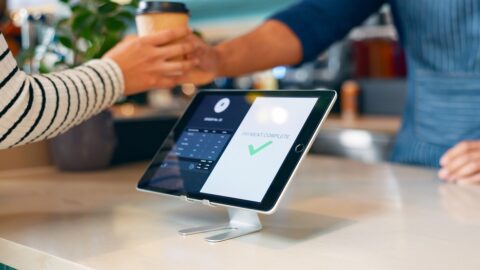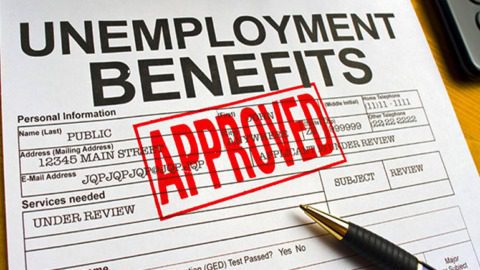Millennials passed Generation Xers (born between 1965 and 1980) to become the largest share of the American labor force in 2015, according to the Pew Research Center. Now that this group makes up more than 34% of the workforce, Millennials are influencing many retail business strategies, including employee and shopper engagement.
One of the key differentiators between Millennials and previous generations is their job tenure. As many as 60% of Millennials (born between 1980 and 2000) leave a current job in less than three years, according to a survey from Grovo. Given that retail chronically suffers from higher turnover rates compared to other industries, this number is likely to be even higher for retailers.
As this younger generation becomes more influential in the modern workforce, the status quo is not sustainable. With more Baby Boomers retiring, retailers will need to attract Millennials to join their teams, and take every possible step to retain quality employees for the long haul. Moving forward in 2017, retailers can learn from brands such as Starbucks and Wegmans as they aim to:
-
Hire employees based on skill set and culture fit;
-
Understand that feedback is crucial toward development of Millennial employees;
-
Provide benefits beyond a living wage;
-
Invest more time and money into training employees; and
-
Onboard workforce management platforms that prioritize open communication for scheduling.
Now Hiring: The Best Fit For Millennials And Employers
When it comes to hiring Millennials, retailers must consider the characteristics they’re looking for in a new employee. This means defining the specific skill set needed to execute a job effectively — whether that is sales acumen for a customer-facing role, or organizational skills that would be a good fit for a back-office position. But most importantly, retailers should consider the characteristics that would be a good culture fit for the organization, according to Scott Knaul, CEO and Founder of SMK Workforce Solutions.
“It really starts with creating a profile of an employee that would be successful in a retail environment,” Knaul said in an interview with Retail TouchPoints. “That way, they’re engaged in their day-to-day duties and they engage with the clients.”
When hiring Millennials (and now even the younger Gen Z), retailers also need to understand that these employees require feedback. And communication should be a two-way street: employers should plan to solicit feedback from employees. After all, this is a generation that is greeted with “What’s on your mind?” every time they open Facebook.
“If I’m a Millennial employee, I need to have a mechanism in place where I can provide feedback not only to my manager, but to the organization, about what could be improvements in my work environment,” said Jim Munoz, Managing Partner at Presence of IT. “The macro is — I need to be comfortable communicating my own observations, needs and wants to my employer.”
This feedback is vital to building any sustainable relationship with Millennials and their younger counterparts, especially given how selective both groups can be when it comes to applying for jobs.
“Young people have been raised with certain expectations, and they aren’t particularly interested in having to choose between a job that pays well, a job that’s transparent, or a job that makes them feel personally fulfilled,” said Rob Callender, Director of Youth Insights at Kantar Futures. “You can debate whether that’s realistic, but with that said, they are also of the mindset that if they’re not getting what they’re looking for, then they’ll try and recreate it on their own.”
Acknowledging these challenges, some retail companies are offering benefits beyond a salary to inspire a more significant sense of personal fulfillment. Starbucks, for example, looks out for its youngest employees through its College Achievement Plan. Participant employees working at Starbucks at least 20 hours per week are eligible to earn their bachelor’s degree through an online program at Arizona State University.
Starbucks pays the selected employees’ tuition in full. While this type of program is still rare within retail, it is a great example of how a brand can go the extra mile and bring interested, qualified Millennials into the fold.
Seeking More Effective Employee Training
Once Millennials are hired, retailers must focus on proper training if they want to retain these sometimes-antsy employees. Today’s forward-thinking retailers are leveraging technology in the form of learning management systems and analytics platforms that can identify and address gaps in employees’ knowledge and skills.
Overall, however, many retailers still skimp in this crucial area. As many as 59% of retailers report that they provide 10 hours or less per year training their existing employees, according to a 2015 RSR report titled: Empowering the Store Employee.
“Retailers don’t invest a lot in training, and most of the investments they make occur when they onboard an employee,” said Nikki Baird, Managing Partner at Retail Systems Research (RSR). “After that, they’re sort of on their own. If there’s something you missed, or you learned once and you didn’t have to do it again for six months and then all of a sudden somebody asked you to do that, how can a retailer expect somebody to remember that?”
Modern workforce management technologies, featuring real-time video, conversation monitoring or other solutions, offer a number of benefits, such as the ability to identify:
-
Top sellers for improved associate engagement;
-
The most productive areas of the store;
-
Quickest checkout lines; and
-
Red flags that may occur through lack of training.
“The whole employee accountability side of retail is big,” Baird stated. “I’ve definitely seen it from Millennials and I haven’t seen anything from Gen Z that tells me any differently. They’re more used to instant, granular feedback than retailers have historically provided in their in-store operations. Retailers can’t operate in an environment where the store employees don’t know how much they sold this hour. Was that on-goal or off-goal, and what were we missing? If they apply instant feedback, their employees will adjust their behavior; you just have to give them the information to do so.”
Simplify Scheduling With Automated Solutions, Mobile Platforms
While training shapes an employee’s ability to work effectively, scheduling directly affects job satisfaction. But the question remains for many retailers: Should we give the associate the ability to assign their own schedule? If so, how do we accomplish this effectively?
Labor groups have criticized traditional retail scheduling practices, such as on-call scheduling, as unpredictable, often resulting in low hourly wages. The on-call scheduling practice requires employees to set aside time to come into the store, without the guarantee of any pay. When on call, workers call the store one to two hours before their scheduled shift to find out if they have to work.
“Any time there’s an issue with the schedule that’s created automatically, the retailer looks to find out the availability of the staff within the stores,” said Knaul of SMK Workforce Solutions. “Since that can be a hindrance to generating the schedule, as constantly updating that info can be a pain, one way of getting around that is to allow employees to pick their own schedule. They can line up the available shifts and set up a priority-based system, which allows certain employees to select specific schedules first.”
Although retailers often seek ways to allow employees to set their own schedule, they can do even more to offer their younger audiences schedule flexibility. Wegmans, for example, is allowing employees who are college students to work at their home store during summer and winter breaks, and at a different location when away at school. Recently, Fortune ranked Wegmans #40 of its 100 Best Workplaces For Millennials. Other retailers on the list include Build-A-Bear Workshop, REI, RevZilla and Sheetz.
Fortunately for other retailers aiming to employ Millennials and their younger Gen Z counterparts, many workforce management technologies can simplify scheduling based on factors such as employee rank and flexibility. Platform providers often design these solutions to follow regulations within the appropriate country or locality, as well as the company’s own business rules, so that an employee isn’t working 70 hours a week or scheduling a day-long shift.
These workforce management platforms are often compatible with mobile devices, so retail teams can leverage them outside the store at all times.
Managers can use mobile devices to share schedules with employees, eliminate stressful last-minute call-outs and notify team members of schedule changes. Employees can even use mobile apps to set a schedule on their own time, or contact each other when a schedule changes.
“Mobile used to be considered a feature,” Knaul said. “‘Hey, we also have mobile that you can use.’ For me, mobile is the price of entry today, and if you don’t have mobile, I’m not sure what you’re doing. Look at the proliferation of devices out there…everybody works on a mobile device. If you don’t have mobile, that’s a significant disadvantage, and if you do have mobile, make sure that it’s rich, easy and intuitive.”
It’s All About Enabling The Employee
While retailers are dealing with a younger breed of employees who have different and more demanding attitudes toward the workplace and life in general, they must evolve to deliver a satisfying work environment.
“Retail’s pretty much been a body shop,” said Baird of RSR. “It’s been about hiring the people you need, getting them on the floor and keeping them long enough that you can at least get your return on training investment before they quit and you have to find somebody else. With the wage environment that a lot more retailers are operating in now — and how it looks like it’s going to go in the future — it’s going to get more expensive to staff stores.”
As the store experience evolves, brands must position their employees to maximize the store’s value, but at the same time “create an environment where that level of effort is appreciated and encouraged,” Baird said. To successfully craft this environment in 2017, retailers must:
-
Study the Millennial and Gen Z generations so they can hire the right people, based on both their abilities and their potential to fit in within the company;
-
Invest a lot of time and money into training these employees and providing benefits;
-
Implement flexible scheduling practices; and
-
Provide feedback to younger employees at every step of the way.
By following these steps, retailers can build a productive Millennial-driven workforce that is educated on the brand’s products and services. With this knowledge and direction, these employees will be more inclined to engage with consumers — whether on the sales floor, in the back office or in customer service.













3 Ways Livestreaming is Shaking Up the Retail Marketing Playbook